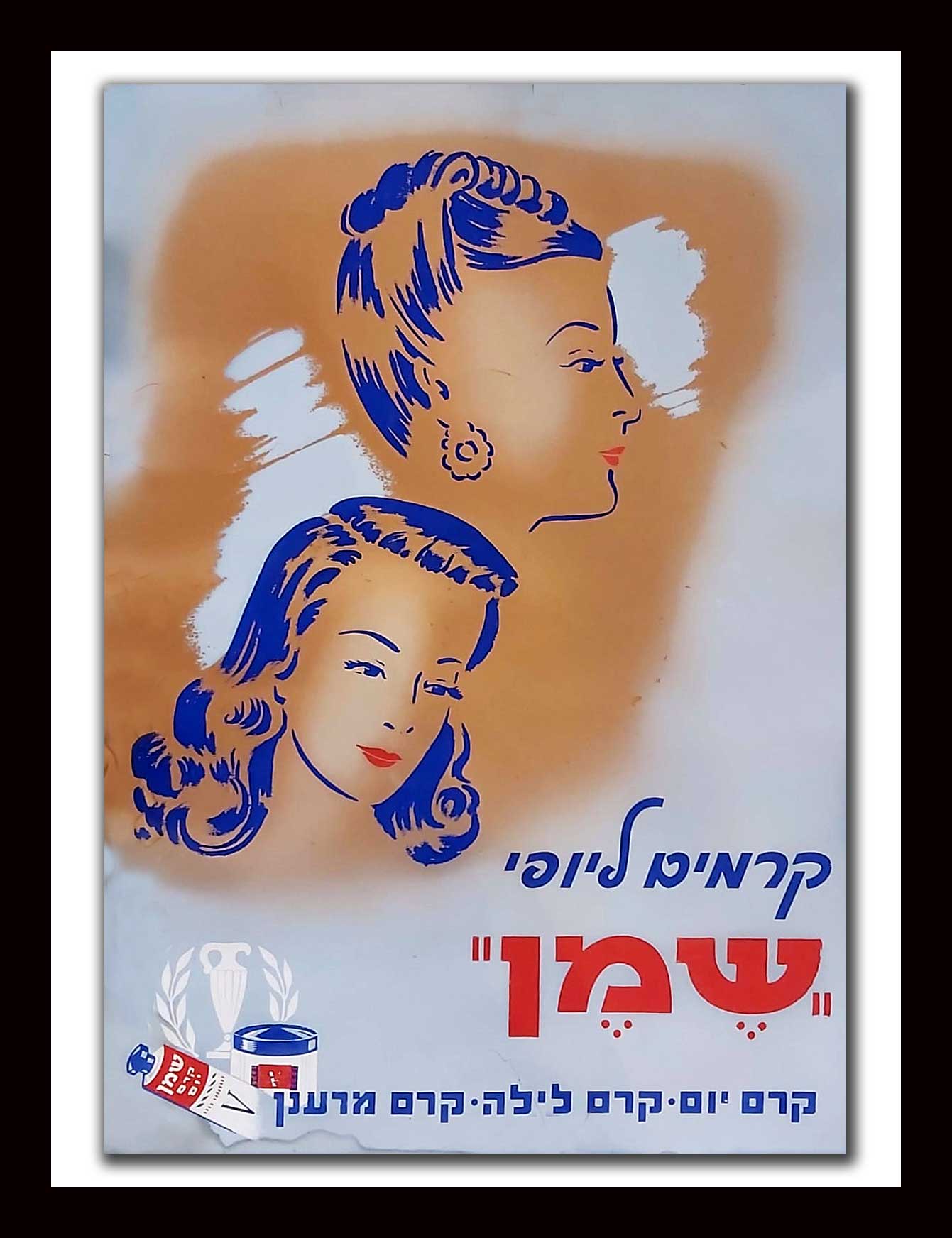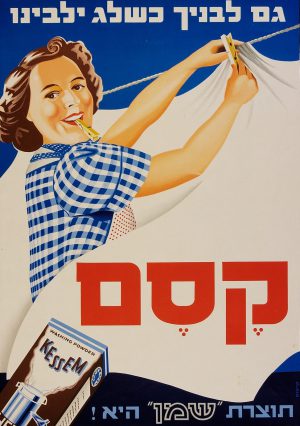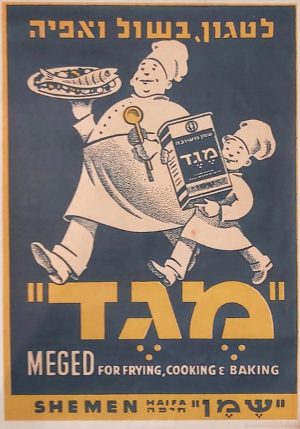Shop
Vintage Israeli Palestine Sign – Shemen Beauty Creams 1936
$0.00
SOLD
| Dimensions | 45 × 60 cm |
|---|---|
| Artist / Creator | |
| Technique | |
| Year | 1936 |
| Condition | |
| Size |
Description
Vintage Israeli Eretz Israel Palestine Sign – Shemen Beauty Creams
This sign was made for a SHEMEN stand at the Levant Fair in the Tel Aviv port 1936
שלט על קרטון משנת 1936 של חברת שמן נעשה בשביל הדוכן של חברת שמן ביריד המזרח
About Shemen Industries Ltd.
The idea of innovating and finding an industry in Israel was first raised in the beginning of the previous century by a group of Hovevei Zion from Minsk, Russia.
In 1903, Nahum Wilboshvitz (later known as Wilbosh), who headed the group, came to Israel in order to check the possibilities of industrial development in the country: searching for energy sources, examining ways of improving and developing the traditional industries, mainly of oil and soap.
Wilbosh proposed to establish a company, which will engage in secondary production of olive oil made of rape once the oil is extracted. At the time, the process was performed using wood-pressers. Wilbosh suggested using chemical resources such as gasoline.
The Foundation
pic_about01BOn a crowded land with olive plantations and oil-pressers that sell rape, a place was found. 100 dunam were bought from the land of Haditha village (located north-east of Lod).
Wilbosh traveled to Europe for the purpose of learning the process of chemical extraction and ordering the required equipment.
“Hadid” factory, later known as “Ben-Shemen”, was established in 1905 with the financial assistance of Jews from Tzritzin who accepted Wilbosh’s enterprise. The factory began working by the end of January 1906, when all the equipment arrived.
The first season was not particularly blessed – out of 260 tons of rape, only 10% of oil was produced, and by the end of the season, the amount of oil reduced to merely 5-6%. The factory was used by Petach-Tikva and Rehovot’s farmers.
“Atid” Factory
Establishing “Shemen”
Despite the difficulties, Nahum Wilbosh did not give up, and in 1919 he founded “Shemen” company in London together with his brothers Moshe and Gedaliah Wilboshvitz and Eliyahu Panison. Since they needed a duty free port in order to export, they planned on building one near Caesarea. Houses were leased and schemes were written, but the British government objected, in spite of Zeev Jabotinsky’s lobbyism.
In 1922 Nahum and Gedaliah Wilboshvitz began establishing “Shemen” factory near “Atid” factory and started assembling the machines. In the new factory, advanced methods of manufacturing and machinery were integrated – hydraulic pressers and diesel engines as well as a modern refinery and soapery. The factory’s engines were inaugurated in December 1924 by the British High Commissioner, Sir Herbert Samuel.
“Shemen” factory put much effort in prompting and marketing the consumption of Israeli products, and was among the first factories which took a major part in building the country.
The Modern Oil Industry
pic_about03BAt later times it was found that extracting oil from olives rape damages the oil quality, and therefore, this method of oil production was stopped at the late 70’s. The oil industry moved to producing oils from grains of different plants such as: soybean, safflower, sunflower and corn whereas the olive oil industry returned only to a mechanical method of manufacturing by olive crushing, extracting the mash and separating the oil juice from the oil .


 Vintage Israeli Poster for Beer A.A. Taste and Quality 1952
Vintage Israeli Poster for Beer A.A. Taste and Quality 1952




